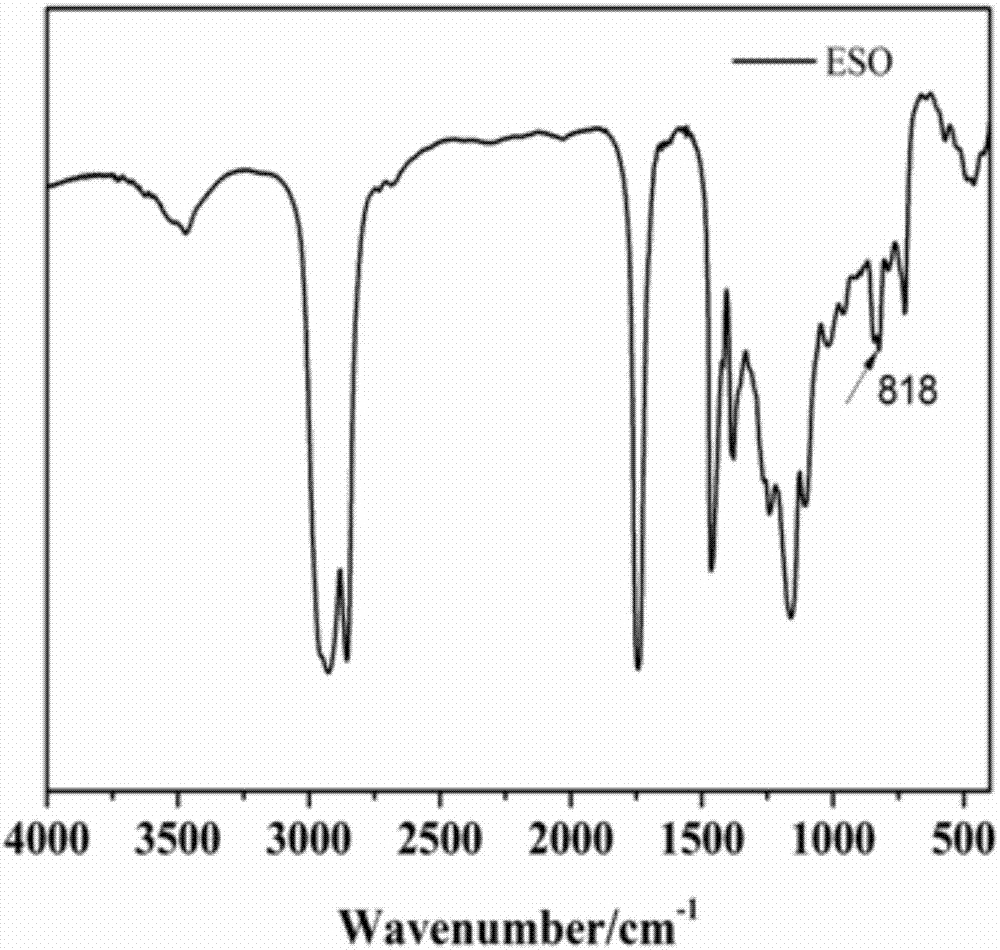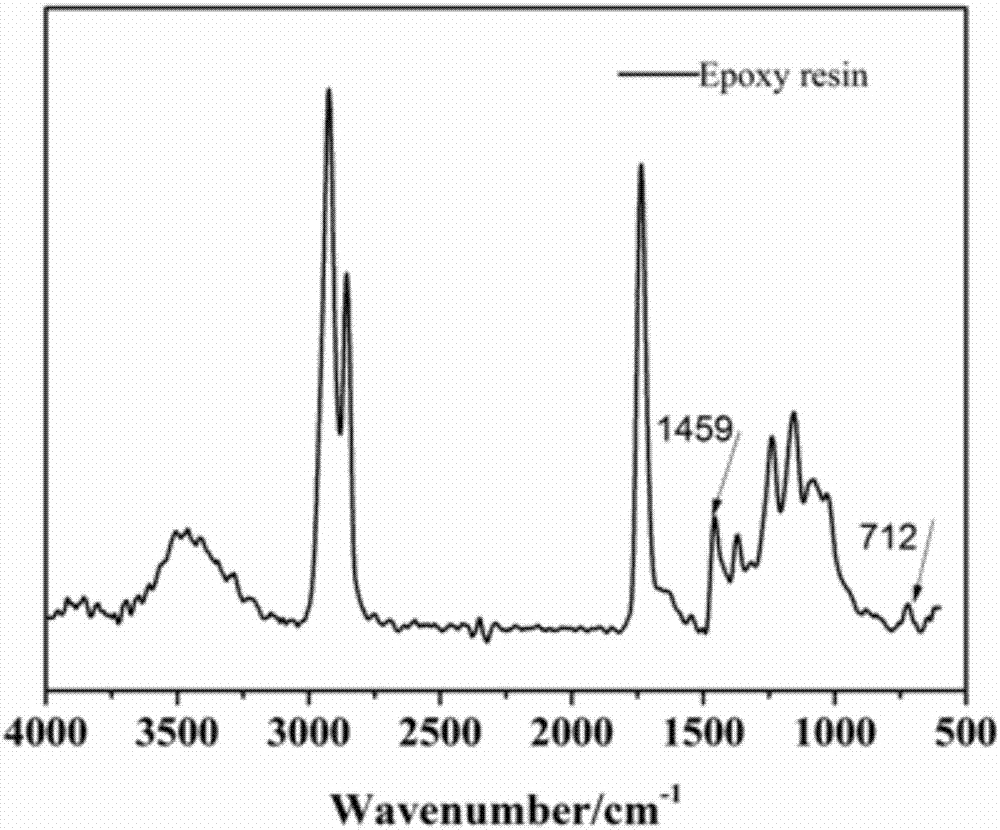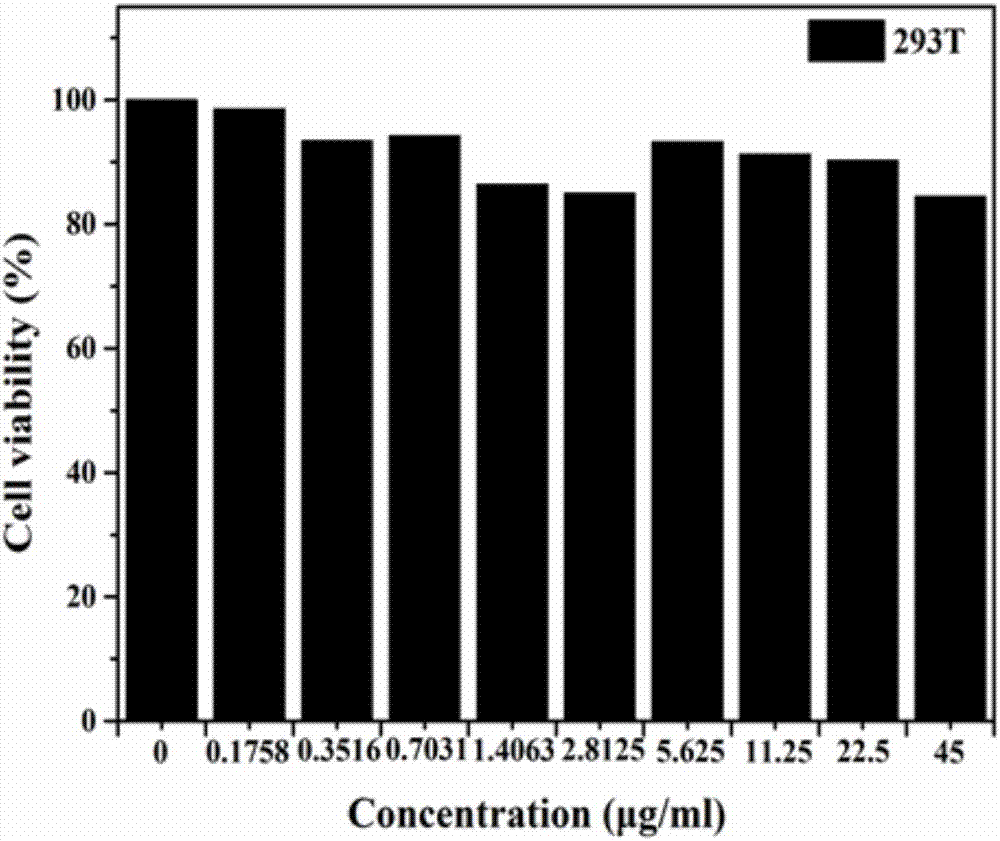Biolipid-based epoxy resin and preparation method and application thereof
A technology based on epoxy resin and bio-oil, applied in epoxy resin coatings, coatings, medical science and other directions, can solve problems such as not conforming to the development trend, and achieve the effect of reducing consumption
- Summary
- Abstract
- Description
- Claims
- Application Information
AI Technical Summary
Problems solved by technology
Method used
Image
Examples
Embodiment 1
[0034](1) Add metered malonic acid and deionized water (molar ratio-COOH:H 2 O=1:0.9), stir and heat up, add the measured epoxidized soybean oil (molar ratio -EPO:-COOH=0.5:1) for the first time, stir and heat up to 120°C, react for 40min; then add the measured Good epoxidized soybean oil (molar ratio -EPO:-COOH=0.5:1), reaction temperature 120°C, reaction 50min; then pour it into a 7.5cm*7.5cm silicone mold, the first step of the reaction is over, and the intermediate product is obtained .
[0035] (2) Put the intermediate product obtained in step (1) into a vacuum oven at 150° C., dry it in vacuum for 15 minutes, and then dry it in an oven at 120° C. for 8 hours to obtain an epoxy soybean oil-based epoxy resin.
[0036] For the infrared spectrum test, the sample to be tested (epoxidized soybean oil) was coated on a KBr sheet, and then placed on a VERTEX 70 infrared spectrometer from Bruker, Germany for testing. The scanning wavenumber range is 4000~400cm -1 , with a resol...
Embodiment 2
[0040] (1) Add metered malonic acid and deionized water (molar ratio-COOH:H 2 O=1:7), stir and heat up, add the measured epoxidized soybean oil (molar ratio -EPO:-COOH=0.5:1) for the first time, stir and heat up to 160°C, react for 90min; then add again Measured epoxidized soybean oil (molar ratio -EPO:-COOH = 0.2:1), reaction temperature 160°C, reacted for 90 minutes; then poured into a 7.5cm*7.5cm silica gel mold, the first step of the reaction was completed, and the intermediate product.
[0041] (2) Put the intermediate product obtained in step (1) into a vacuum oven at 180° C., and vacuum bake for 24 hours to obtain epoxy soybean oil-based epoxy resin.
[0042] With the FTIR spectrogram of the synthetic process of the novel epoxy resin of VERTEX 70 type infrared spectrometer of German Bruker company, the obtained result characteristic peak is identical with embodiment 1.
Embodiment 3
[0044] (1) Add metered malonic acid and deionized water (molar ratio-COOH:H 2 O=1:1), stir and heat up, add the measured epoxidized soybean oil (molar ratio -EPO:-COOH=0.5:1) for the first time, stir and heat up to 120°C, react for 40min; then add the measured Good epoxidized soybean oil (molar ratio -EPO:-COOH=0.5:1), reaction temperature 120°C, reaction for 50 minutes, and then poured into a 7.5cm*7.5cm silica gel mold, the first step of the reaction is over, and the intermediate product is obtained .
[0045] (2) Put the intermediate product obtained in step (1) into a vacuum oven at 150° C., dry it in vacuum for 15 minutes, and then dry it in an oven at 120° C. for 8 hours to obtain an epoxy soybean oil-based epoxy resin.
[0046] With the FTIR spectrogram of the synthetic process of the novel epoxy resin of VERTEX 70 type infrared spectrometer of German Bruker company, the obtained result characteristic peak is identical with embodiment 1.
PUM
| Property | Measurement | Unit |
|---|---|---|
| tensile strength | aaaaa | aaaaa |
| elongation at break | aaaaa | aaaaa |
Abstract
Description
Claims
Application Information
 Login to View More
Login to View More - R&D
- Intellectual Property
- Life Sciences
- Materials
- Tech Scout
- Unparalleled Data Quality
- Higher Quality Content
- 60% Fewer Hallucinations
Browse by: Latest US Patents, China's latest patents, Technical Efficacy Thesaurus, Application Domain, Technology Topic, Popular Technical Reports.
© 2025 PatSnap. All rights reserved.Legal|Privacy policy|Modern Slavery Act Transparency Statement|Sitemap|About US| Contact US: help@patsnap.com



